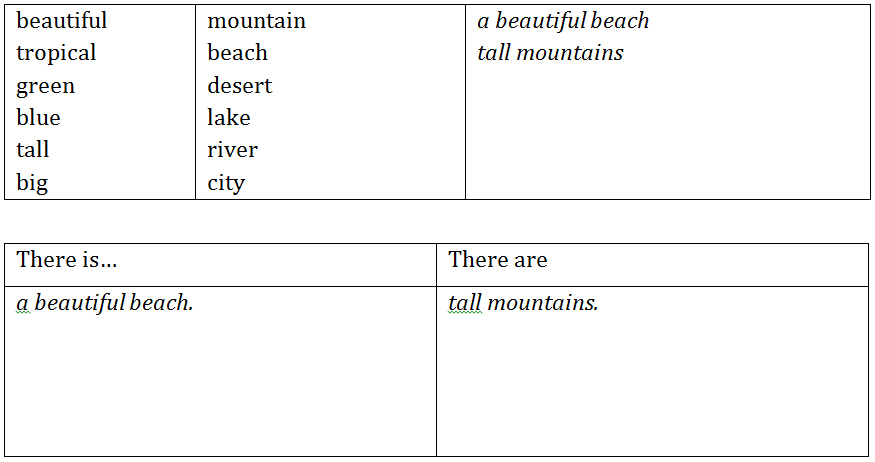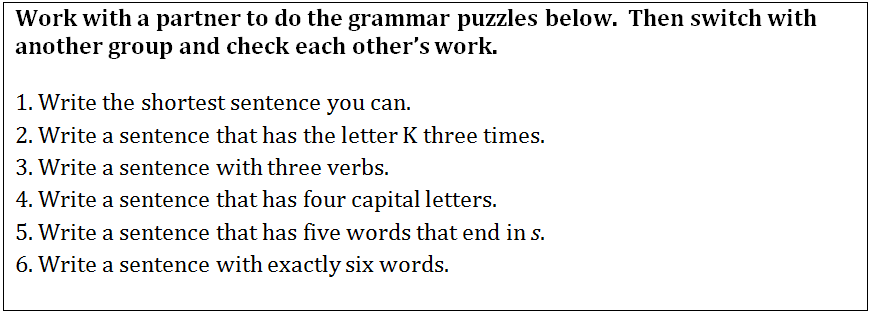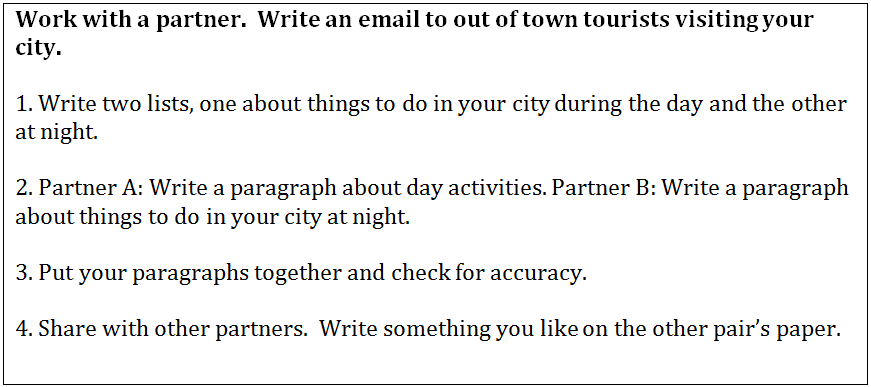
Trio Writing authors Alice Savage and Colin Ward offer 6 practical activities to help your beginner level students write successfully in English.
For native speakers, a writing process that starts with a plan and ends with sentence-level editing makes sense. However, non-native writers have different challenges, especially at the introductory level. Fortunately, process writing is not set in stone. We can adapt it to suit our students’ needs.
The first step is to identify those needs. Lower level ELLs need language, lots of it, and early on. They may also need extra support in meeting the expectations of target language readers.
The following classroom activities offer options for tweaking the standard writing process. They are meant to be flexible, working tools that can be used individually or together depending on the unique characteristics of a class and its goals.
1. Front-load with language
Students who sign up for a low level English writing class bring very little language with them, so it makes sense to start with vocabulary and grammar, but which vocabulary and grammar? Fortunately, the prompt itself points the way.
For example, in a beginning writing class, the prompt What does your country look like? suggests the target language. The vocabulary elements might include mountains, beaches, rivers, a desert, and other place nouns. Adjectives such as green, tropical, tall, beautiful would also be helpful. The grammar lesson might include the plural –s and There is/ there are.
Pulling all these elements together can already feel like an uphill climb; however, the lesson can be made more efficient if the language is taught in chunks. Consider using images to teach beautiful mountains, tropical beaches, or a large desert. Then set up activities that allow students to mix and match to create new patterns such as the following:
Use the words to make phrases about your country. Add a for singular, and –s for plural. Then fill in the chart below.

In the example above, students practice vocabulary and grammar to produce accurate sentences that are ready to go when it is time to write a paragraph about their country.
The activity can also be extended by eliciting additional adjectives and nouns related to the students’ own contexts.
2. Conference at the point of need
One on one conferencing is generally helpful for all writers, but it can be adapted to suit the particular needs of ELLs. Multi-lingual writers may need more direct guidance if they are to meet the expectations of L1 readers. A simple checklist can provide both focus and flexibility for this task. In the example below, developed for a two-paragraph assignment, the teacher may comment on all items, but targets only one for the conference. This focus keeps the revision manageable for the low level English learner.
Conferencing Checklist

- The assignment indicates the student has gone off topic, and the conference will focus on planning for a new draft.
- Paragraphing might include options for rearranging content to develop ideas and shape them into paragraphs.
- Language focuses on vocabulary, grammar, mechanics and/or other syntax issues.
- Ideas discusses ways that a strong student might stretch their skills by elaborating or even adding an additional paragraph.
3. Share the revision process
Peer interaction helps English learners develop both language and writing skills. The following activities can be implemented during conferencing or any stage of development where students need review or practice. The first partner activity below practices grammar and vocabulary, while the second focuses on paragraph awareness.
Grammar Puzzles

Collaborative Writing

4. Repurpose peer review
Students can sometimes treat peer review as an error hunt, but peer readers can play other roles as well. For example, why not make the reader more of an active listener by asking questions to help the writer clarify ideas?

Teachers can also set a quick and motivating publishing stage by having writers exchange final drafts and directing them to simply enjoy and respond to one another’s ideas. This gives beginning writers the chance to have their final draft read without being evaluated.

Even beginners can write a paragraph or two when the process is tweaked to meet their needs. By going a little lower, a little slower, and rethinking the writing process from the perspective of language learners, it’s possible to help students succeed from the very beginning.
All materials adapted from Trio Writing by Alice Savage and Colin Ward, Oxford University Press
An earlier version of this article first appeared on englishendeavors.org. If you’d like to read more ideas for the English language classroom, click here.


Reblogged this on hungarywolf.
Great ideas re writing in class. Recently I’ve been focussing my students on the whole writing process, especially with regards to exam writing. I feel it’s important to guide them through their timing and really show them what they can do to maximise it in the exam. I do a lesson showing them a step by step guide which focusses on their planning, 1st draft, editting and 2nd draft. Some of them hate it because it’s too intense, but others love it.
Thanks for extra tips.
Barry
Amazingly effective examples of how to make writing classes light and cool.